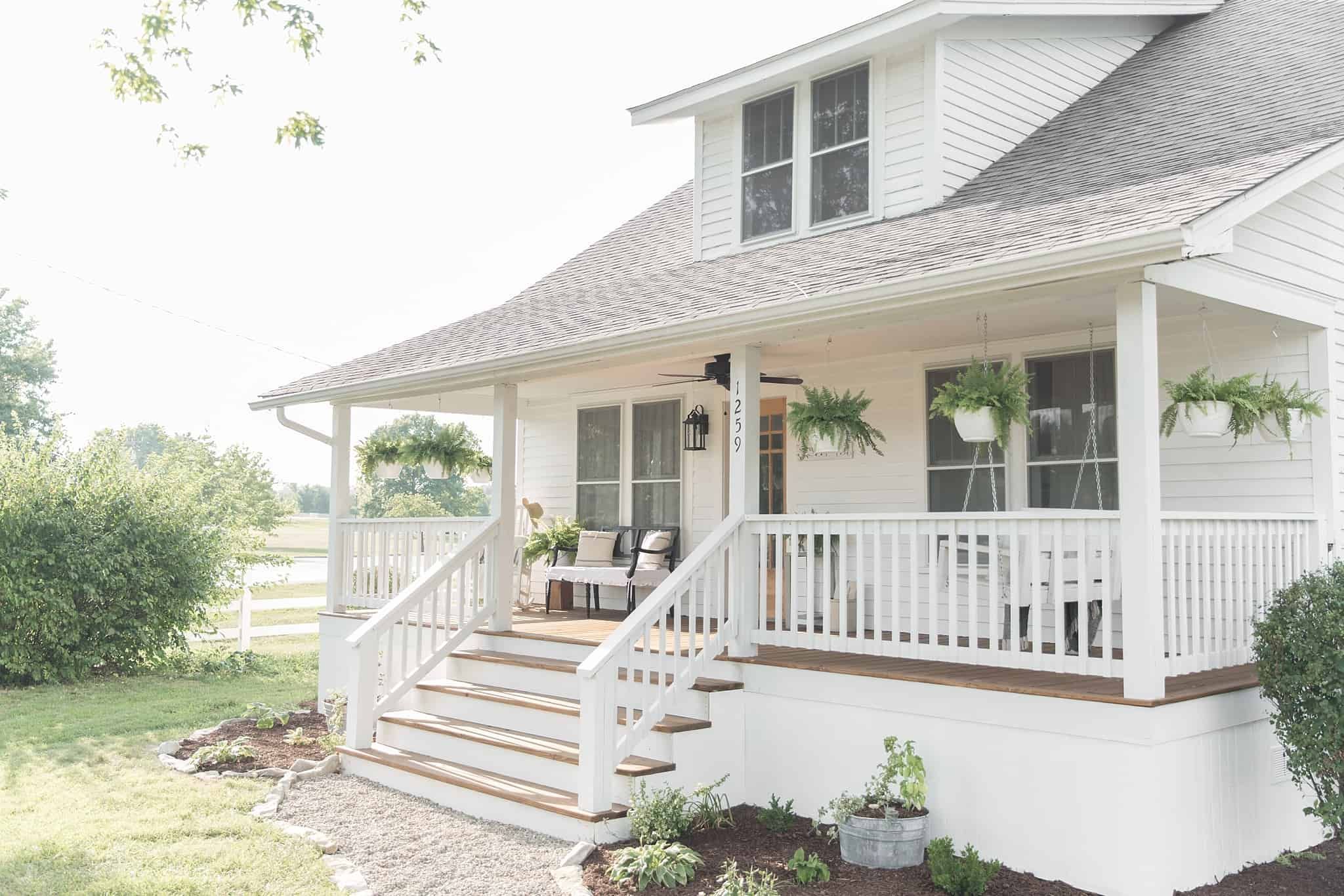

No flooring, horrid empty walls bath not sealed no shower. I have recently (2 years) become a single mom and 9 months ago moved in to a empty shell of a house. You have helped me soo much from reading your blog. Reply To This Comment ↓ Aimee Blackford Augat 4:58 pm All material was purchased at Lowes, Home Depot, and Menards.” Decking is cedar and has yet to be sanded and stained. Step treads are 12″ deep minus the thickness of the pvc backer board. That would defeat the purpose of being maintenance free. All pvc boards are left with their square edges intact and not sanded to round them because I’ve heard that sanding them opens the pvc cells and draws dirt into them unless they are going to be painted which i don’t ever intend to do.

The white plugs are invisible (no caulk over screw holes, love that). Boards for skirting and the backer board on steps are 3 1/2″ pvc boards wood grain side facing out attached with a Cortex hidden fastening system. Before spindles are placed into the rails a rubber foam like strip (comes in the package) is inserted into the bottom rail I suppose to reduce any movement once they are installed.

Spindles are black powder coated aluminum. Rails and spindles come together in a package. The caps are glued on with pvc glue that comes with the caps. The base trim sits on the decking tight and secure but slides up for ease of sanding and staining. Next the base trim for the bottom is then slid over the tube. The posts are pressure treated and have a square pvc tube that is slid over them. The framing underneath is all pressure treated wood. past each side of the door so I can set items down to unlock the door. I have a small 3×5 landing at the top of the steps with 1 ft. “The new back door is fiberglass with wide pvc boards framing it instead of wood brick molding. Here is a link to a pic of Keven’s steps and railing, and his description and sources that he sent is below. Reply To This Comment ↓ Kristi Augat 8:48 am The reason I chose not to use the standard stringer method is because (1) drilling into concrete is just such a pain, so the idea of drilling enough holes to attach seven stringers to the concrete porch wasn’t something I wanted to do, and (2) because when I saw this large area of concrete with the huge aggregate exposed and loosely packed, I didn’t feel comfortable at all with the idea of stringers for my steps being attached to that concrete for support.
#Wooden front porch steps designs 3 sided series
Instead, I chose to build a series of modified boxes that stack one on top of the other. This is a very informative video that describes that standard method. The standard way to build steps is to cut stringers out of 2″ x 10″ or 2″ x 12″ lumber, and to secure those to the deck or porch. The steps I’m building are probably different than most steps that you’ve seen. I started working on my front porch steps this weekend, and I got most of the basic framework finished.


 0 kommentar(er)
0 kommentar(er)
